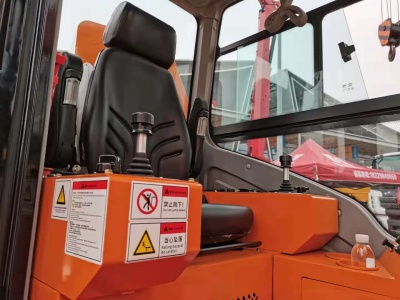In the complex operation scenarios of cranes, precise control is crucial. The multi - axis joystick has emerged as an essential tool, providing operators with a high-degree of control over various crane functions. This article delves into the control methods of multi - axis joysticks in crane applications, aiming to enhance understanding of this key technology.

Control Principle of Multi-axis Joysticks
Multi-axis joysticks are designed to translate the operator\\\\\\\\\\\\'s physical movements into electrical signals. In crane operations, these signals control multiple aspects of the crane\\\\\\\\\\\\'s movement. For example, in a typical two-axis joystick, one axis might control the hoisting and lowering of the load, while the other manages the slewing motion of the crane\\\\\\\\\\\\'s boom. When the operator moves the joystick in a particular direction, variable resistors or sensors within the joystick detect the displacement. This displacement is then converted into proportional voltage or current signals. These electrical signals are transmitted to the crane\\\\\\\\\\\\'s control system, which interprets them and activates the corresponding motors or hydraulic valves. This principle enables smooth and accurate control of the crane\\\\\\\\\\\\'s operations, whether it\\\\\\\\\\\\'s lifting a heavy load gently or rotating the boom precisely to a specific position.
Operation Modes of Multi-axis Joysticks
Proportional Control Mode:In this mode, the movement of the joystick is directly proportional to the speed or force of the crane\\\\\\\\\\\\'s operation. For instance, if the operator slightly tilts the joystick to raise the load, the hoist motor will operate at a slow speed. As the operator tilts the joystick further, the motor speed increases proportionally. This mode is particularly useful when delicate operations are required, such as placing a load in a precise location. It gives the operator fine-tuned control over the crane\\\\\\\\\\\\'s movements, ensuring safety and accuracy.
Step-by-Step Control Mode:Some cranes equipped with multi-axis joysticks also feature a step-by-step control mode. In this mode, each distinct position of the joystick corresponds to a specific operation or speed setting. For example, moving the joystick to the first detent position might start the crane\\\\\\\\\\\\'s movement at a low, fixed speed, while moving it to the second detent increases the speed to a pre-set higher level. This mode is beneficial in situations where a series of predefined operations need to be carried out in a sequence, providing a more structured approach to crane control.
Safety-related Control Measures
Emergency Stop Function:Multi-axis joysticks are often equipped with an emergency stop button. In case of an unexpected situation, such as a sudden malfunction or a potential collision, the operator can immediately press this button. Once pressed, the emergency stop button sends a signal to the crane\\\\\\\\\\\\'s control system, which cuts off power to all non-essential functions of the crane. This rapid response helps prevent accidents and minimizes potential damage.
Dead-man\\\\\\\\\\\\'s Switch:Another important safety feature is the dead-man\\\\\\\\\\\\'s switch. This switch is designed to ensure that the crane only operates when the operator is actively engaged with the joystick. The switch is usually incorporated into the joystick\\\\\\\\\\\\'s grip, and it requires the operator to apply a certain amount of pressure to keep it activated. If the operator releases the grip or loses consciousness, the dead-man\\\\\\\\\\\\'s switch will automatically disengage, stopping the crane\\\\\\\\\\\\'s operation. This safety measure is a crucial safeguard against uncontrolled crane movements.
In conclusion, the integration of multi-axis joysticks in crane operations marks a significant advancement in achieving precision, efficiency, and safety. Understanding the control principles, operation modes, and inherent safety mechanisms of these devices is paramount for operators and engineers alike. As technology continues to evolve, further enhancements in multi-axis joystick design and functionality are anticipated, promising even greater levels of control and safety in the complex and demanding environment of crane operations.